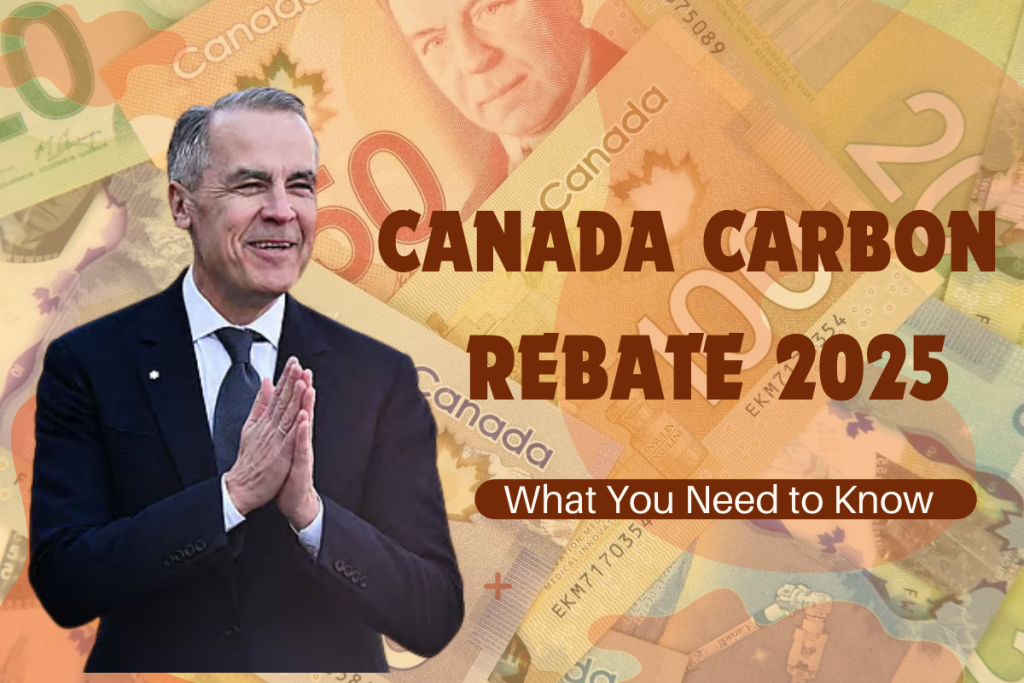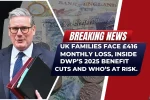Canada Carbon Rebate 2025 : If you are living in Canada then Canada Carbon Rebate 2025 might be help you to put money back in your pockets. Canada Carbon Rebate 2025 offer money to families to help compensate the extra costs caused by carbon pricing. With higher prices for fuel and energy this rebate use to reduce the sting and makes the country plan for a cleaner environment.
Rebate going to change in 2025 that means more people will notice the impact. The government updates rebate payment rates and eligibility to maintain living costs and policy changes at same level. For many families this tax-free payment comes at right time and for some may be delay. Having knowledge of how the program works, who qualifies and what is new for the year, Keep you ahead
Canada Carbon Rebate 2025 Overview
| Section | Key Points |
| What Is the Rebate? | Refund for fuel charge costs, paid directly to most Canadians |
| Changes in 2025 | Updated payment methods, amounts and climate targets |
| Who Qualifies? | Most residents in affected provinces, some income and filing rules apply |
| Payment Process | Paid automatically, usually through direct deposit or check |
| Payment Amounts | Varies by province, family size and region |
| Personal and Environmental Impact | Reduces fuel cost burden, encourages greener choices, helps reach climate goals |

What Is the Canada Carbon Rebate and How Does It Work?
The Canadian government program Canada Carbon Rebate previously known as the Climate Action Incentive (CAI) give money to households who are facing higher costs from the federal carbon tax. The main purpose of this program is to help the families during they slowing down pollution. This rebate program started in 2019 return money back in your pocket each and every year. For 2025 new targets and payment processes have decide to make things smoother and more effective.
Canada Carbon Rebate policy now targeting provinces where the government carbon tax applied because local rules did not meet the national standards. Canada carbon rebate use to support cleaner air while keeping things fair for families. The rebate joined to Canada’s bigger climate action plan which encourages people and businesses to use cleaner energy options.
Evolution of the Carbon Rebate 2025
The Carbon Rebate changes 2025 is as per following-
- New increased payment amounts to compensate rising carbon prices.
- Now area of rebate increased to targeting more provinces now getting payments at every three months instead of yearly tax credits.
- New climate goals according to aim for net zero emissions by 2050.
- New clearer rules for eligibility.
These updates help you to stay up-to-date with rising living costs and steeper federal climate targets.
Eligibility for Canada Carbon Rebate 2025
Most Canadian residents in provinces where the federal carbon tax applies qualify. Here is a quick checklist
- Residency: You must live in a participating province.
- Tax Filing: File your annual tax return, even if you have no income.
- Income: There is no income cap, but low-income households may get additional support.
- Family Status: Single adults and families (including single parents) qualify for different amounts.
- Indigenous Residents: Eligible for the rebate, including those living on reserves.
Regional programs in British Columbia and Quebec work differently, so residents there do not get the federal rebate.
How Rebates Are Paid to Canadians
No need to apply separately. The Canada Revenue Agency (CRA) calculates your rebate when you file your taxes. The majority of people who are qualified will get paid every three months through direct deposits or checks in 2025.
When you can expect your payment:
- First Payment: Usually starts in April, following your tax return.
- Payment Method: If you have set the Direct deposit with CRA or you can got through by mail.
- Keep Information Updated: Make sure that your address, banking information and your contact number are updated with the CRA it avoid delays payment.
2025 Payment Amounts by Province
Your rebate will depend on where you live and how many people live in your home. Based on how much the federal carbon price changes the cost of fuel, each province sets its own amounts.
For those eligible Canadians can expect to receive their quarterly payment in 2025:
| Province | Single | Couple | 4 Family Members | Rural Bonus |
| Alberta | $140 | $210 | $280 | +20% |
| Ontario | $110 | $165 | $220 | +20% |
| Manitoba | $120 | $180 | $240 | +20% |
| Saskatchewan | $130 | $195 | $260 | +20% |
| Nova Scotia | $100 | $150 | $200 | +20% |
| Newfoundland | $105 | $157 | $210 | +20% |
Saskatchewan, Manitoba, Ontario, Alberta and many more receive the largest rebates, reflecting higher fuel use and tax rates. One adults or couples without any children receive a lower rebate payment but it is still important.
What are the Impacts On You and the Environment
The rebate helps you deal with the higher cost of gas and it also helps the national push for cleaner energy. You should think about a few things though before you decide how to spend the extra money.
Why This Rebate Matters More Than Ever
With gas prices and home heating costs rising the rebate offers real relief. More households are feeling pinched so this program matters for your wallet and your future environment.
Financial Implications for Households
Families see the biggest boost. For example a four person home in Alberta could see over $1,120 in 2025, paid out quarterly — that’s $280 every three months.
What Are The Tips to maximize your benefit:
- File your taxes on time and accurately.
- Confirm your banking info with CRA.
- Watch for notices about regional adjustments.
Even single adults with low income see a boost, helping with everyday bills and groceries.
Regional Differences in Rebate Amounts
Why do some provinces get more? The formula looks at
- Carbon price rates in your province.
- How much fuel the average resident uses.
- How much revenue the carbon tax raises locally.
Since Alberta and Saskatchewan’s economies are based on resources, they get bigger rebates because they use more energy and fuel. Some Atlantic provinces joined the federal program more recently, So amounts can shift as the tax structure changes.
Environmental Outcomes and Policy Effectiveness
The rebate is NOT just money in your pocket. It is part of a plan to cut Canada’s emissions. The theory is if carbon costs more, you will use less and greener choices become easier.
- Households keep the rebate regardless of their choices — if you lower your fuel use, you still get the same payment.
- Early reports show that rebates ease the pain of carbon pricing without taking away the price signal for polluters.
- Reduced emissions: It is hoped that Canada can meet its climate goals for 2030 and 2050 as more green options become available.
Gas and heating costs are going up and some people are feeling it more than others. The rebate is meant to help most families deal with these costs.
The Canada Carbon Rebate in 2025 provides you with regular cash to offset rising fuel costs, helps to reduce emissions and places you at the center of climate policy. As the rules and amounts change year after year keep an eye on payment schedules and any regional updates that may increase your rebate. For most Canadian residents the rebate remains a welcome pocket of relief and a nod toward a cleaner more affordable future.
FAQs
1. Do I need to apply for the 2025 Canada Carbon Rebate?
No, you just need to file your taxes. The CRA handles the rest
2. How often will I get the rebate in 2025?
Most provinces receive quarterly payments.
3. Who can qualifies for the Carbon Rebate?
Mostly Canadians in provinces with the federal carbon tax qualify, as long as you early file a tax return.


